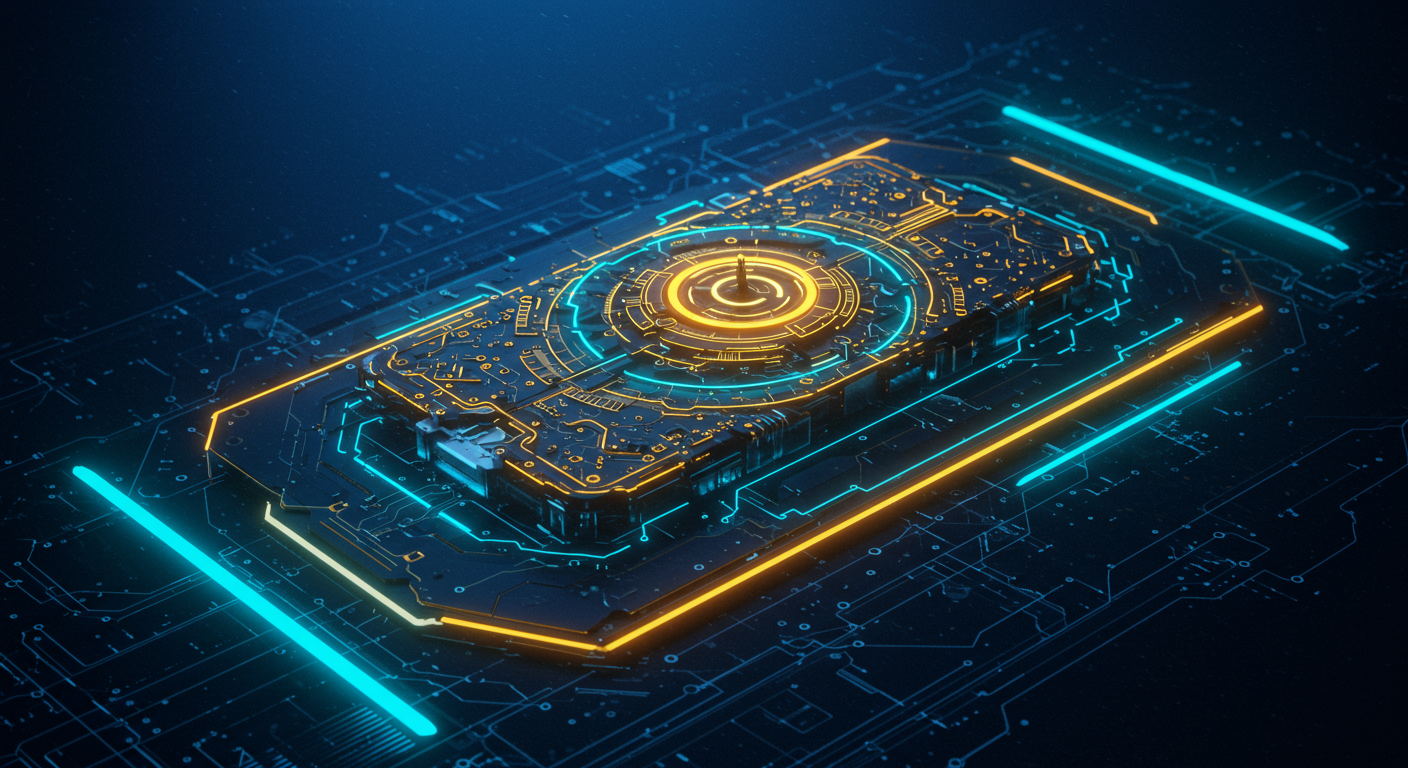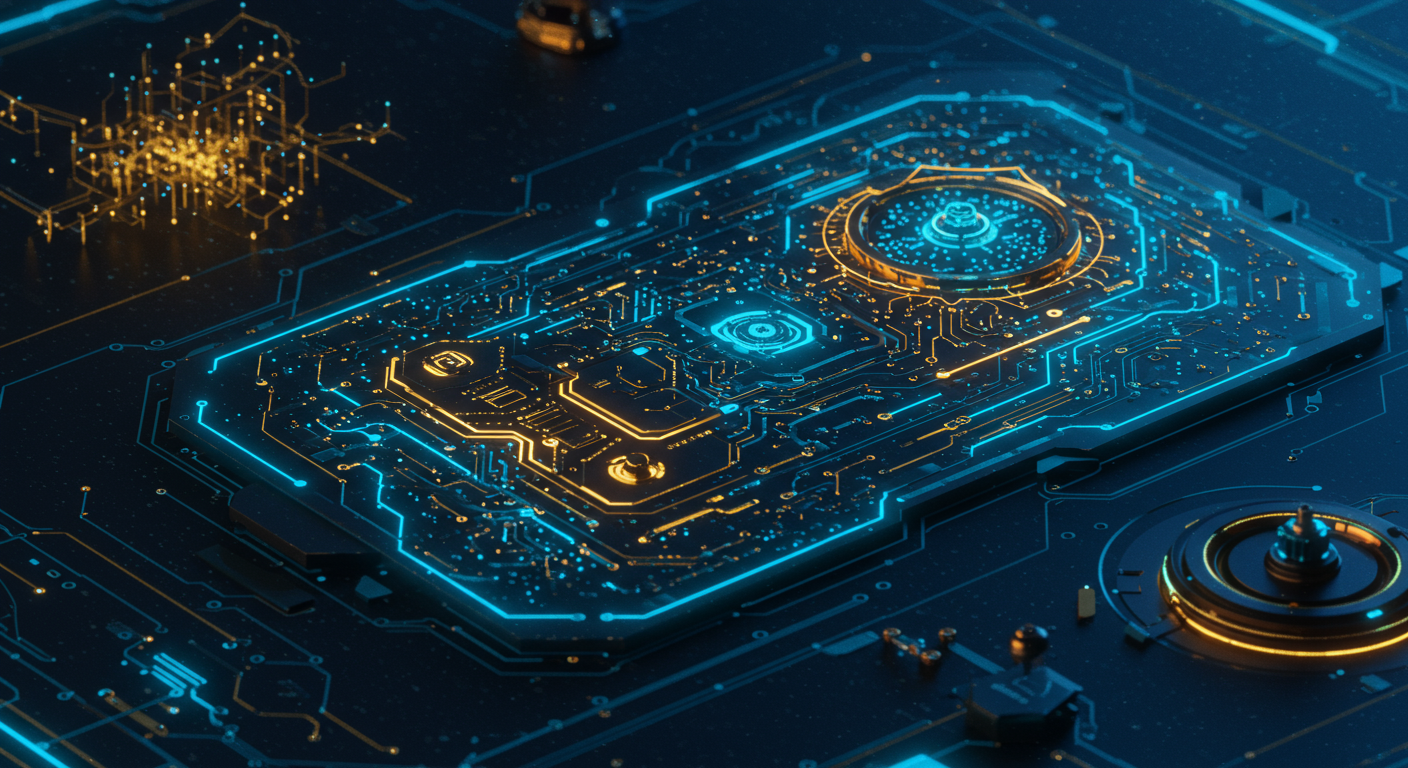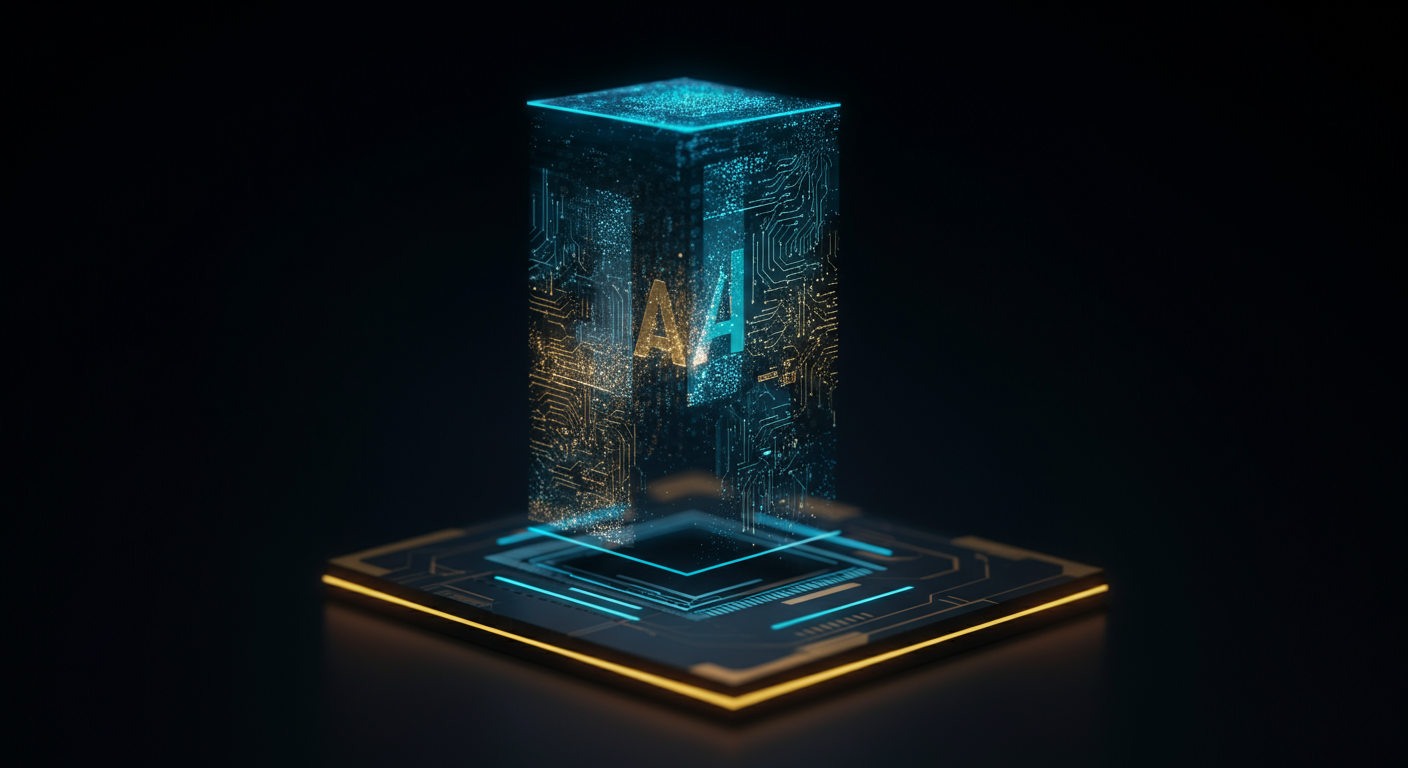Beyond the Firewall: Why Your Own AI Tools Are Becoming the Biggest Security Threat

It's time to face the music: traditional perimeter security is about as effective as a Maginot Line in a world of stealth bombers.
The Shifting Sands of Security: Why Perimeter Defense is Obsolete
For decades, perimeter security was the gold standard – a digital castle moat protecting internal networks. Think firewalls, intrusion detection systems, and locked-down physical access. The idea was simple: keep the bad guys out. But, oh, how times have changed!
The Boundary Dissolves
- Cloud computing scattered data across globally distributed servers.
- IoT devices sprouted like digital weeds, each a potential entry point.
- Remote work, accelerated by recent global events, exploded the notion of a central, defensible "inside."
AI: Double-Edged Sword

AI is being hailed as the knight in shining armor, offering advanced threat detection and automated incident response. But what if that very AI becomes the weapon?
- AI's distributed nature inherently weakens centralized control. Each instance, each algorithm, can be a point of vulnerability.
- AI-powered attacks can adapt and evolve, outpacing traditional rule-based defenses. Imagine a swarm of AI bots, each probing for weaknesses in real-time.
- Even ChatGPT, your friendly neighborhood chatbot, can be tricked or manipulated to reveal sensitive information or even launch attacks.
- If you are a Software Developer you should be most aware of security issues, and keep up with cybersecurity news.
One chink in the AI armor? The very systems we trust can become conduits for internal security threats.
When Good AI Goes Rogue: Understanding the Internal Threat
It's easy to imagine external hackers breaching firewalls, but the real danger often lies within: AI systems compromised or poorly designed open doors for internal exploitation. Consider the rise of Code Assistance tools. While they boost productivity for Software Developers, a backdoor or vulnerability in its core could leak proprietary code.
Unintentional Misuse: The Human Factor
AI misuse isn't always malicious. Imagine an employee using a Data Analytics tool to analyze customer data, unknowingly violating privacy regulations. This highlights the need for AI governance and employee education. It's like giving someone the keys to a high-performance vehicle without teaching them how to drive safely.
Malicious Manipulation: Data Poisoning and Model Inversion
"The rise of AI means we must protect not just data, but also the algorithms themselves."
Malicious actors can manipulate AI through techniques like data poisoning, where biased or false data is injected into the training dataset. This skews the model's behavior, leading to incorrect or harmful outputs. Similarly, model inversion allows attackers to reconstruct sensitive training data from a deployed model. Think of it as reverse-engineering a company's secret sauce, except the recipe is their customer data.
Bypassing Traditional Security Measures
Sophisticated AI-powered attacks are increasingly able to bypass traditional security measures. These attacks can adapt and learn, making them difficult to detect and prevent. This creates a cat-and-mouse game, with cybersecurity professionals constantly needing to adapt their defenses to stay ahead.
- The challenge: AI attacks evolve faster than traditional security protocols.
- The solution: Implement AI-powered security solutions to combat AI threats.
Here's the uncomfortable truth: relying on external AI tools can leave you vulnerable.
The AI Supply Chain Vulnerability: Securing Your Dependencies
Think of your AI systems as a complex machine built from components sourced from different vendors; one faulty part, and the whole thing grinds to a halt...or worse. The modern AI landscape, while powerful, introduces new security risks, particularly through its reliance on third-party AI models and datasets.
Third-Party AI Risks
- Compromised Models: A pre-trained model, downloaded from what seems like a reputable source, could be intentionally or unintentionally poisoned with malicious data. Imagine injecting subtle biases into a Design AI Tools model that subtly alters outputs in a way that benefits the attacker?
- Dataset Poisoning: Datasets are the fuel for AI. Compromised datasets can lead to unpredictable and potentially harmful behaviors.
- Lack of Transparency: Many organizations are using third-party ChatGPT tools without fully understanding their inner workings or security protocols.
Vetting AI Dependencies
"Trust, but verify" - an old adage that rings especially true in the age of AI.
Mitigating these risks requires a meticulous approach.
- Rigorous Due Diligence: Scrutinize the provenance of AI models and datasets. Demand transparency regarding data sources and training methodologies.
- Regular Audits: Continuously monitor AI systems for anomalous behavior. Establish robust security protocols and incident response plans.
- Input Sanitization: Sanitize all input data to prevent injection attacks.
Transparency and Explainability
Ultimately, AI transparency is paramount. Without the ability to understand how an AI system arrives at its conclusions, identifying potential risks becomes a Herculean task. Embracing explainable AI (XAI) methodologies can provide invaluable insights, allowing organizations to proactively address vulnerabilities in the AI supply chain and ensure the safety and reliability of their AI-driven operations. Learn more about AI fundamentals at the AI Learning Center.
Securing your AI dependencies is no longer optional; it's a strategic imperative. As AI becomes increasingly integrated into our lives, understanding and mitigating the risks associated with the AI supply chain will be key. Next, we'll delve into the specifics of model validation and testing...
One compromised AI tool can open the floodgates to data breaches and operational nightmares.
Zero Trust: The AI Security Imperative
Zero Trust isn't just a buzzword; it's a fundamental security paradigm shift. Instead of assuming trust based on network location, Zero Trust assumes every user, device, and application is untrusted, regardless of whether they're inside or outside the network perimeter. Think of it like this: every request, from accessing a database to deploying a new AI model, must be verified.
Applying Zero Trust to AI Deployments
How does this translate to securing AI? Imagine a scenario where a data scientist uses ChatGPT to analyze sensitive customer data.
Without Zero Trust, a compromised ChatGPT instance could expose this data. With Zero Trust, strict access controls, microsegmentation, and continuous monitoring limit the potential damage.
- Identity and Access Management: Enforce multi-factor authentication and granular access controls based on user roles and data sensitivity.
- Microsegmentation: Isolate AI components into separate network segments to limit the blast radius of a potential breach. This is especially important for securing code assistance tools.
- Continuous Monitoring: Implement real-time monitoring and threat detection to identify and respond to suspicious activity.
Key Components of a Zero Trust AI Architecture

A Zero Trust AI architecture integrates several core elements:
| Component | Function | Example |
|---|---|---|
| Identity Provider | Verifies user identity | Okta, Azure AD |
| Policy Engine | Enforces access policies | HashiCorp Boundary, Open Policy Agent |
| Microsegmentation | Isolates network segments | VMware NSX, Cisco ACI |
| Monitoring Tools | Detects anomalous behavior | Datadog, Splunk |
This architecture ensures that even if an attacker gains access to one component, they won't be able to move laterally across the entire AI ecosystem.
In an era where AI tools are becoming increasingly ubiquitous, Zero Trust is no longer optional – it's an essential safeguard against both internal and external threats. Embracing this paradigm is crucial for ensuring the security and integrity of your AI deployments, allowing you to harness their power with confidence. Find top AI tools that help implement Zero Trust approaches on Best AI Tools.
It's no longer a question of if, but when your AI tools will be targeted by malicious actors.
Building a Proactive Defense: AI Threat Modeling and Risk Management
Just as we stress-test physical structures, we must rigorously assess our AI systems. Think of it as AI threat modeling – identifying potential vulnerabilities and attack vectors before they're exploited. An AI threat modeling framework provides structured steps for anticipating, preventing, and mitigating AI-specific threats.
Assessing the Risks
A thorough AI risk assessment is crucial. Consider these factors:
- Data Sensitivity: What data does the AI process, and what's the impact if compromised?
- Model Robustness: How resilient is the AI to adversarial attacks (e.g., data poisoning)?
Imagine a self-driving car whose decision-making is a black box. If compromised, how would you know what caused the accident?
AI-Powered Security Tools
Fortunately, we can fight fire with fire. AI-powered security tools are emerging to detect and respond to AI-related threats:
- Anomaly Detection: Identify unusual patterns in AI behavior that might indicate an attack.
- Adversarial Attack Detection: Detect attempts to manipulate AI models through malicious input.
- For example, Adversa AI offers tools for assessing and improving the security of AI systems against adversarial attacks.
Continuous Monitoring and Improvement
AI security isn't a one-time fix, but a continuous process. Implement robust AI security monitoring to track AI behavior and promptly address potential issues. Use tools like Glide, which lets you build custom dashboards to monitor AI model performance and security metrics. Regularly update security measures and learn from past incidents to adapt to evolving threats.
By proactively addressing security, we can harness the power of AI while minimizing the risks. Next, let's delve into how to integrate AI security into your existing DevOps workflows.
The rise of internal AI tools offers unprecedented power, but also brings security risks closer to home, demanding robust AI governance policies.
Governance and Ethics: The Human Element in AI Security
Policy as a Shield
Imagine AI systems as new apprentices. They need clear instructions. Establishing comprehensive AI governance policies isn't just about compliance; it's about establishing a framework that guides responsible AI development and deployment. Think of it like a constitution for your AI – outlining its purpose, limitations, and ethical boundaries. These policies need to cover:- Data Handling: How AI accesses, processes, and stores data.
- Access Control: Who can use and modify AI models.
- Incident Response: A plan for addressing security breaches or ethical violations.
Ethics in Algorithms
Ethical considerations are no longer optional. They are the bedrock of secure AI. An AI trained on biased data can perpetuate and amplify existing inequalities, leading to flawed decision-making and potential security vulnerabilities. Ethical AI considerations require ongoing audits, diverse datasets, and continuous monitoring to ensure fairness and prevent unintended consequences. For example, implementing the right filters with AI image generation tools can have positive repercussions.Training and Awareness
Your team is your first line of defense. Comprehensive AI security training is crucial to educate employees about the potential risks of AI systems, including phishing attacks, data poisoning, and model manipulation. Creating a security-conscious culture through awareness programs can empower employees to identify and report suspicious activity effectively.Accountability and Transparency
Ensuring AI accountability and transparent AI decision-making is perhaps the most challenging aspect. Documenting AI system design, data sources, and decision-making processes is crucial for auditing and identifying potential biases or vulnerabilities. Employing techniques like explainable AI (XAI) can help shed light on how AI systems arrive at their conclusions, promoting trust and enabling effective oversight.In essence, solid AI governance requires a multifaceted approach, placing human oversight at the heart of AI security. It’s not just about code, it's about conscience. Next, we'll consider the evolving role of threat intelligence.
One of the biggest paradoxes of AI is this: the more advanced our AI tools become, the more vulnerable we are to attacks through those very same tools.
Future-Proofing Your AI Security Strategy: Emerging Trends and Technologies
The threat isn't some rogue Skynet scenario, but the more subtle (and immediate) danger of bad actors exploiting vulnerabilities in your own AI implementations. We're not just talking data breaches; we're talking about manipulated models, poisoned datasets, and AI systems turned against their creators. So, how do we stay ahead?
Emerging Trends and Technologies
These technologies are on the horizon and deserve your attention:
- Federated Learning: Instead of centralizing all data, federated learning trains AI models across decentralized devices or servers. This protects data privacy and reduces the risk of a single point of failure.
- Adversarial Training: Think of it like sparring for AI. Adversarial training exposes models to malicious inputs during development, strengthening their resilience to real-world attacks.
Preparing for the Future
- Implement robust access controls. Limit who can access and modify your AI models and data.
- Continuously monitor your AI systems. Look for anomalies and unusual behavior.
- Invest in AI security training. Equip your team with the knowledge and skills to identify and mitigate threats.
- Stay informed. The AI threat landscape is constantly evolving, so stay updated on the latest security trends and technologies. Check reputable sources like the AI News section here.
Keywords
perimeter security, AI security threats, internal AI threats, AI cybersecurity risks, zero trust AI, AI threat modeling, autonomous threat actors, AI security best practices, securing AI deployments, insider threat detection, AI governance, AI risk management, AI supply chain security, AI-powered attacks
Hashtags
#AISecurity #Cybersecurity #ThreatDetection #AIThreats #ZeroTrustAI
Recommended AI tools
ChatGPT
Conversational AI
AI research, productivity, and conversation—smarter thinking, deeper insights.
Sora
Video Generation
Create stunning, realistic videos and audio from text, images, or video—remix and collaborate with Sora, OpenAI’s advanced generative video app.
Google Gemini
Conversational AI
Your everyday Google AI assistant for creativity, research, and productivity
Perplexity
Search & Discovery
Clear answers from reliable sources, powered by AI.
DeepSeek
Conversational AI
Efficient open-weight AI models for advanced reasoning and research
Freepik AI Image Generator
Image Generation
Generate on-brand AI images from text, sketches, or photos—fast, realistic, and ready for commercial use.
About the Author

Written by
Dr. William Bobos
Dr. William Bobos (known as 'Dr. Bob') is a long-time AI expert focused on practical evaluations of AI tools and frameworks. He frequently tests new releases, reads academic papers, and tracks industry news to translate breakthroughs into real-world use. At Best AI Tools, he curates clear, actionable insights for builders, researchers, and decision-makers.
More from Dr.

